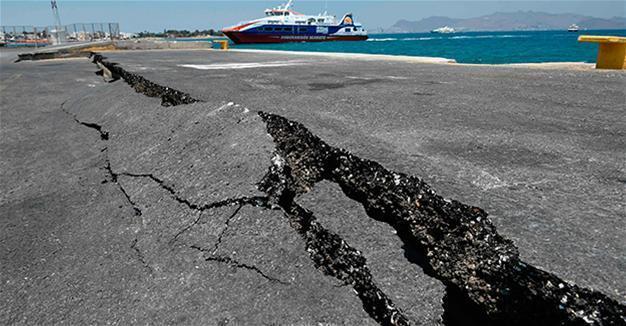Turkey’s top scientific body approves project forecasting quakes in İzmir
İZMİR

AFP photo
The Scientific and Technological Research Council of Turkey (TÜBİTAK) approved to finance a project worth 350,000 Turkish liras ($98,000), which aims to forecast the timing of future earthquakes in the Aegean province of İzmir, daily Habertürk reported on July 26.
The project named “ditch” (“hendek” in Turkish) will be run by Dokuz Eylul University’s Earthquake Research and Implementation Center (DAUM) and is expected to determine where fault lines are located.
The studies are expected to last for two days, with the first excavation work being undertaken in Sept. of this year. The project involves digging at least 10 ditches in the province’s most “dangerous” five fault lines. The officials will start the project with the İzmir fault line, which has the most destructive potential.
In the first stage, two ditches will be opened in the depth of four meters on the 40-kilometer long İzmir fault line starting from the district of Güzelbahçe to Pınarbaşı. When an earthquake is expected, it will be known by the authorities in the first months of 2018. Afterwards, ditches will be opened in the Gülbahçe, Seferihisar, Tuzla and Kemalpaşa fault lines, listed in order of priority. A team of 10 people, including PhD and masters students, are expected to be running the project.
DAUM president Prof. Hasan Sözbilir told daily Habertürk that the construction firms will take the project into account for their future plans and will no longer undertake construction on the fault lines. “We will be able to forecast the earthquake days before thanks to devices that will be placed on these fault lines and perceive the changes happening prior to the quake,” Sözbilir said.
“First of all, we will mark the passing routes of the fault lines on the map and then determine on which points ditches can be opened. The area to be dug should be an empty place that has never been excavated before and has no construction nearby. Then, we will open two ditches on every fault line. For example, we are initially thinking of two ditches in the Güzelbahçe and Balçova districts for the İzmir fault line,” he noted.
“We will analyze the passage between the layers. In every earthquake, materials are carried between blocks. The time span between outflows will be determined. This way, we will calculate how much time we have left. In every fault line, 12 radon measure devices will be buried, which will measure gas changes. After determining how much gas change corresponds to the magnitude of an earthquake, changes will be monitored constantly,” Sözbilir said.
Meanwhile, Istanbul Technical University academic Prof. Dr. Ahmet Ercan made a forecast regarding Istanbul’s next big earthquake.
“It is not possible for the expected big Marmara earthquake to happen now. For the Marmara quake to occur, the level of energy needs to reach six billion gigatons. So far, the power level is not that high in Marmara. According to my research, it can reach this power in 2045,” Ercan said, according to a report by Doğan News Agency.
